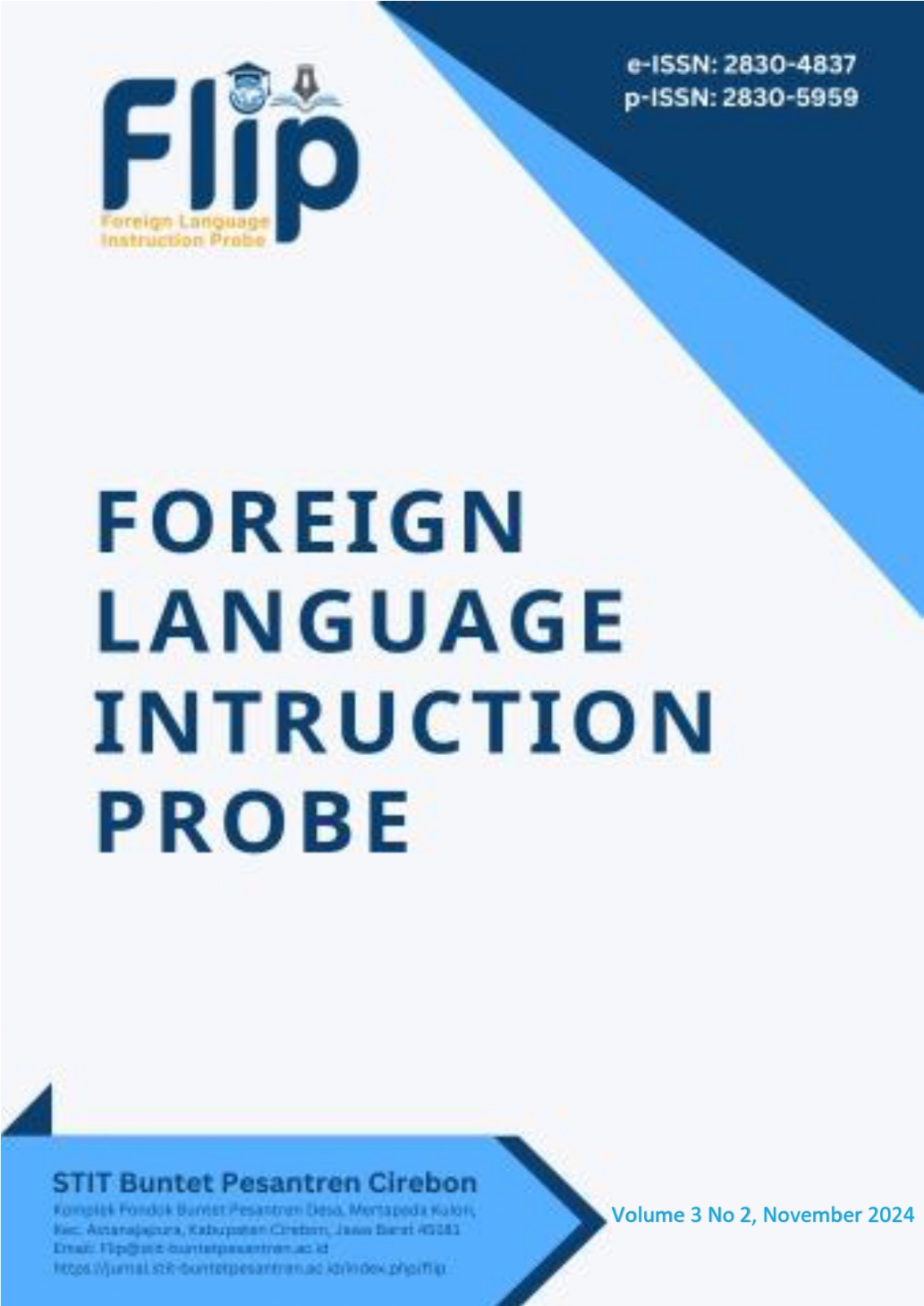The Effectiveness of Implementation of The Nearpod Application on Students’ Vocabulary Achievement at Junior High School
Abstract
This study aimed to evaluate the effectiveness of the Nearpod application in enhancing students' vocabulary. Utilizing a quasi-experimental design, quantitative methods were employed, and data were collected through pre-tests and post-tests. The findings revealed a significant improvement in vocabulary scores among students using Nearpod. The experimental group showed an increase in average scores from 51.13 (pre-test) to 75.97 (post-test), with a maximum score of 90 and a minimum score of 60. In contrast, the control group's scores increased from 52.03 to 72.22, with a maximum score of 85 and a minimum score of 55. The T-test results indicated a higher post-test score in the experimental group compared to the control group. The standard deviation for the experimental group was 8.604, and for the control group, it was 7.763. The average standard error was 1.587 for the experimental group and 1.265 for the control group. The independent sample t-test showed t (df=56) = 2003 with a p-value of 0.945, leading to the rejection of the null hypothesis (Ho) and acceptance of the alternative hypothesis (Ha). These results suggest that the Nearpod application is effective in improving students' vocabulary achievement.
Downloads
Published
Issue
Section
License
CopyrightNotice
Authors who publish in this journal agree to the following terms:
In order to assure the highest standards for published articles, a peer review policy is applied. In pursuit of the compliance with academic standards, all parties involved in the publishing process (the authors, the editors, the editorial board, and the reviewers) agree to meet the responsibilities stated below in accordance with the journal publication ethics and malpractice statement.
Duties of Authors:
- The author(s) warrant that the submitted article is an original work, which has not been previously published, and that they have obtained an agreement from any co-author(s) prior to the manuscript’s submission;
- The author(s) should not submit articles describing essentially the same research to more than one journal;
- The author(s) make certain that the manuscript meets the terms of the Manuscript Submission Guideline regarding appropriate academic citation and that no copyright infringement occurs;
- The author(s) should inform the editors about any conflicts of interest and report any errors they subsequently, discover in their manuscript.
Duties of Editors and the Editorial Board:
- The editors, together with the editorial board, are responsible for deciding upon the publication or rejection of the submitted manuscripts based only on their originality, significance, and relevance to the domains of the journal;
- The editors evaluate the manuscripts compliance with academic criteria, the domains of the journal and the guidelines;
- The editors must at all times respect the confidentiality of any information pertaining to the submitted manuscripts;
- The editors assign the review of each manuscript to two reviewers chosen according to their domains of expertise. The editors must take into account any conflict of interest reported by the authors and the reviewers.
- The editors must ensure that the comments and recommendations of the reviewers are sent to the author(s) in due time and that the manuscripts are returned to the editors, who take the final decision to publish them or not.
Authors are permitted and encouraged to post online a pre-publication manuscript (but not the publisher’s final formatted PDF version of the work) in institutional repositories or on their websites prior to and during the submission process, as it can lead to productive exchanges, as well as earlier and greater citation of published work (see The Effect of Open Access). Any such posting made before acceptance and publication of the work shall be updated upon publication to include a reference to the publisher-assigned DOI (Digital Object Identifier) and a link to the online abstract for the final published work in the journal.









